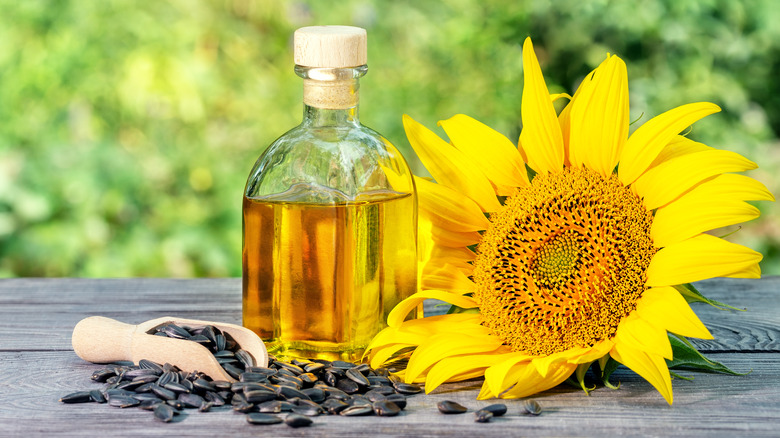How The War In Ukraine Is Affecting Global Oil Prices
More than just a pretty face, the sunflower is a plant that keeps on giving. Green City Growers explains the roots (aka the Jerusalem artichoke) can be cooked eaten raw; its more robust shoots will perk up salads in a way alfalfa could never, per The New York Times; sunflower petals can add a pop of color to almost any dish; its head can be grilled before it is eaten — Delish reports a version of this unusual dish even became a viral sensation. And who could forget sunflower seeds, which are either enjoyed in and of themselves as a snack or used to make oil.
Unfortunately, supplies of sunflower oil, which makes up 13% of the edible oils used in kitchens around the world today, according to the International Food Policy Research Institute, continue to be squeezed thanks to the ongoing war in Ukraine. Prized as its national flower, per Food Business News, before the war Ukraine was the world's top exporter of sunflower oil — making up as much as 50% of the global sunflower oil market. But now that the world is facing a shortage of sunflower oil consumers are naturally beginning to look elsewhere for their cooking needs, which could mean bad news for your wallet.
Companies and consumers attempt to replace sunflower oil
The absence of Ukrainian sunflower oil has hit the global market hard, causing prices to rise sharply. A year ago the USDA says the plant-based fat was trading at just 83 cents per pound; today that same pound costs $1.13, per Food Business News. In addition to home and restaurant cooking applications, sunflower oil is a popular ingredient in snack foods, meaning those large corporations may also be shopping around for alternatives. Stratas Foods vice president for research, development, innovation, and quality Roger Daniels explained to the outlet that, due to "tightening of supply due to constraints in supply and rising prices" people are "look[ing] to other high-oleic oil options as an alternative. These are oils derived from high-oleic soybean and high-oleic canola."
The prices for these alternative oils are increasing right along with demand. Food Business News reports the price of both soybean and canola oil were up 16 cents in May of this year compared to 2021.
The prices are likely to remain high
Unfortunately, there are no quick fixes for the global sunflower oil shortage, as multiple factors are contributing to the issue. Russia's invasion could not have happened at a more inopportune time for the global cooking oil market. The International Food Policy Research Institute says that even before the war, climate change and lower-than-expected crop yields were already wreaking havoc on soybean crops meant to be used for oil in South America, setting the stage for tighter vegetable oil supplies all around.
The institute now says how long vegetable oil prices will remain elevated depends on when peace can be restored to Ukraine and its production facilities get back up to speed. Before that happens, there is no telling how high prices will go, or for how long they are meant to stay this way.


